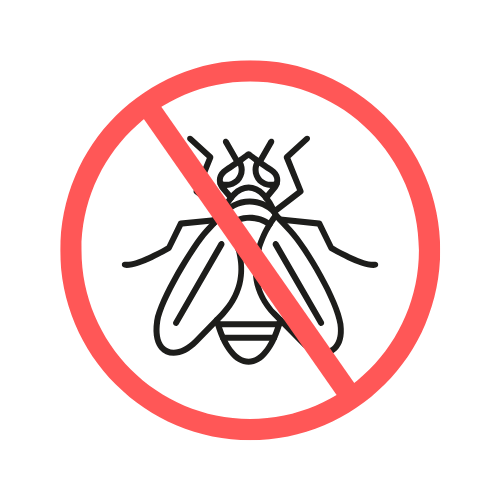
Grower Resources
This page outlines all grower resources for SWD management and Integrated Pest Management Strategies for managing pests in small fruit farms.
Integrated pest management
strategy
emphasis
SWD Float Test
Monitoring for Spotted Wing Drosophila Using Salt Water Float Tests
SWD is controlled well using simple IPM strategies and principles.
Quick Links for Grower Resources
SWD Control
The standard Pacific Northwest approach to SWD control consists of three steps:
Assess
Monitor
Respond
SWD Risk Factors
Numerous factors influence SWD risk at the field level, These ‘risk factors’ play an extremely important role in likelihood of SWD damage in a field. The document below highlights all risk factors for environmental factors, crop factors and cultural practices.
Sampling for SWD
Larvae Extraction Procedures
Collect a sample of marketable fruit to be tested
Fruit collected should be from the highest risk areas of the field (field edges near border habitats) and from most susceptible location within the plant (the shaded interior of bush where SWD are protected from the elements).
The number of fruit depends on the crop (given different sizes of fruit) and crop stage (how much ripe fruit is easily accessible). For blueberries, the number of fruit should ideally be between 150-300 fruit per samples, strawberries is 30-50, raspberries 60-100, blackberries 40-60. Fruit should be quick to collect and a sample shouldn’t take more than 5-10 minutes to collect. If it takes more than that, there probably isn’t enough ripe fruit to take the sample and/or take a smaller sample size of fruit.
A minimum of 3 samples should be collected from different high risk areas of the field.
Sampling should be done at least 2 times per week in order to catch very early, treatable, and non-economic SWD presence.
Put fruit in a gallon size resealable plastic bag
Lightly squeeze fruit in the bag just enough to break skins but you don’t want to smoosh the fruit to a pulp because that makes it very hard to analyze.
Optional: Leave fruit in bag in hot sun to heat to do initial larvae inspection. Heating will cause larvae, if present, to emerge from fruit and will be actively moving and easy to spot.
Pour in enough of a salt water solution to allow the fruit to float
Solution is: 1 cup of salt per gallon of water
Alternative solution is using sugar at 2.5c per 1 gal of water. Advantage of sugar is a longer survival time of larvae in the solution.
Analyze collected fruit samples
For a quick check in the field after a designated period of time (at least 15 minutes)
A final check should be done after allowing sample to soak for 1 hour or more. Use a shallow flat tray to pour bag contents into. Having a large surface area makes it easier to examine for any SWD larvae. Wire mesh can also be used to further separate fruit from solution.
Field Management
One of the basic tenets of IPM is having a toolbox of management options and utilizing the least intensive option that can address the immediate field need. For many years, the SWD management toolbox had few options outside of chemical controls, but that toolbox has and continues to expand rapidly, greatly reducing the need to rely solely on chemical controls. Here is information on some of these different management options:
- Parasitoids – Traditional biocontrol, releases of SWD specific parasitoids began in the Northwest in 2023 and the idea is that populations will establish over time and generally keep SWD populations in check. See resource.
- Mating disruption/Sterile releases – Using various gene editing technologies, sterile SWD are produced and can be released in/around the farm environment. Mating with the sterile insects produces non-viable offspring which helps to disrupt SWD population growth. Additionally, various pheromone/chemical compounds are being researched and developed which directly/idirectly disrupt SWD’s ability to reproduce. See resource
- Attract and Kill – a compound combination of SWD attractent with a chemical kill agent which can avoid have to apply chemical to the crop itself but still attain
- Traditional chemical controls
- Alternative spraying patterns – Because of SWD’s behaviour and migration patterns into a field, strategic application of chemical controls can often be applied in lower pressure situations to help control and mitigate SWD risk.
- Field perimeter spraying – As SWD moves from non-crop areas into the field, an application along the field edges can be an effective strategy to keep SWD out while not having to cover an entire field.
SWD Trapping
Trapping is a helpful tool to track adult populations from year to year and over the course of the season. However, they are inadequate for determining field damage or risk. If trapping keep the following in mind:
- Consistency is more important than specific trap design or bait used. There are many options out there, the best solution is the one you can stick with.
- Placement is key, ensure trap is shaded and protected as that is most likely to be in SWD’s path.
- Traps in the middle of the field are unlikely to be helpful and will rarely catch SWD.
- Placing traps in adjacent border habitats can be insightful to population reservoirs. Paired closely with a field trap, seasonal border-field movement can be monitored.
- Male AND Females should be counted, ID skills crucial (Click to view the ID key)
- Do not make standalone management decisions on trap counts, but do compare numbers between years to get a sense for how SWD pressure may be similar/different from past experience.
Spotted Wing Drosophila (SWD) is a major pest affecting small fruit crops in the Pacific Northwest.


(503) 285-0908
1100 NE 28th, STE 204,
Portland OR 97232
[email protected]
Additional SWD Resources
SWD IPM Information
© Northwest Berry Foundation. 2025 All Rights Reserved.
